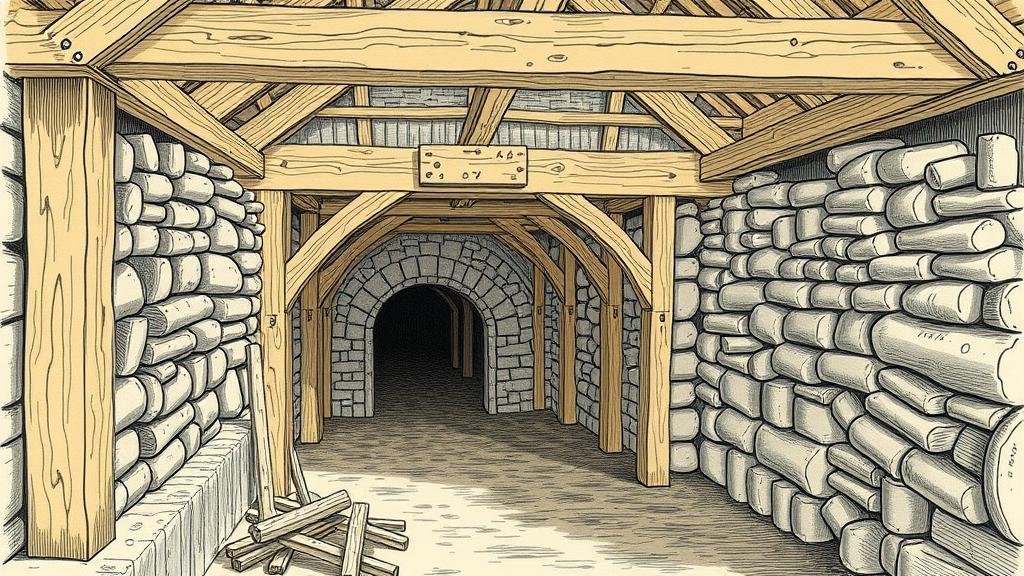How Agricola’s Timber Framing Improved Shaft and Tunnel Safety
How Agricola’s Timber Framing Improved Shaft and Tunnel Safety
The advancement of mining techniques during the Renaissance, particularly in the 16th century, was profoundly influenced by the work of Georgius Agricola. His seminal work, De Re Metallica, provided comprehensive insights into the mining practices of his time. Among his various contributions, Agricolas emphasis on timber framing played a crucial role in enhancing safety in shafts and tunnels. This article explores how these methods improved structural integrity and reduced hazards in mining operations.
The Importance of Timber Framing
Timber framing refers to the method of constructing a building or structure using timber. This technique is essential in mining, particularly in the support of underground shafts and tunnels. Prior to Agricolas recommendations, many mining operations suffered from collapses, leading to injuries and fatalities. introduction of effective timber framing systems created a safer working environment.
Timber Selection and Engineering
Agricola highlighted the importance of selecting the right type of timber for mine construction. Hardwoods, such as oak and beech, were preferred for their strength. Also, Agricola applied engineering principles, such as load distribution and the strategic placement of supports, to enhance the stability of mine shafts. For example, he advised miners to use timber sets spaced at regular intervals, which significantly enhanced the ability to support heavy loads from overlying rock.
- Timber sets absorb and distribute loads, minimizing the risk of collapses.
- Well-engineered supports can allow for deeper mining operations while maintaining safety.
Case Studies and Historical Context
Understanding Agricolas contributions through historical context is vital. Before the implementation of his timber framing techniques, mining shafts often featured crude, inadequate supports. The notorious Freiberg region in Saxony, Germany, faced multiple mining tragedies due to poor engineering practices. Agricola documented these incidents and advocated for standardized timber use and proper support techniques.
In regions where Agricolas methods were adopted, such as the Harz Mountains, there was a notable decrease in accidents. Reports from miners indicated that shaft collapses decreased by over 30% in the subsequent years of applying his timber framing guidelines. This reduction in hazard not only saved lives but also increased production efficiency.
Innovations in Design
Agricola also introduced various innovative designs to further improve shaft safety. Among these were the arch and crown designs which effectively harnessed the natural strengths of timber. These designs provided better weight distribution and increased the resilience of shafts against geological pressures.
- The arch design allowed for natural weight distribution, reducing the risk of failure.
- The crown model created a protective barrier against falling debris, improving miner safety.
Impact on Long-Term Mining Practices
The influence of Agricolas timber framing techniques extended beyond his immediate historical context. His recommendations laid the foundation for modern engineering practices in underground construction. Today, similar principles are employed in civil engineering, where understanding material properties and load distribution remains critical.
For example, advances in materials science have allowed for the development of synthetic alternatives to timber, yet the principles of structural support remain grounded in Agricolas foundational concepts. Current mining practices continue to utilize engineering methods derived from his strategies, ensuring miner safety and operational efficiency.
Conclusion
Agricolas contributions to timber framing significantly enhanced the safety of shafts and tunnels in mining operations during the Renaissance. Through careful selection of materials, innovative design, and standardized engineering practices, Agricola transformed mining safety protocols. His legacy continues to influence contemporary engineering, emphasizing the enduring importance of sound structural principles in ensuring miner safety.
Actionable Takeaways
- Understand the significance of material selection in construction and mining.
- Use innovative design strategies for safety improvements in tunneling operations.
- Adopt standardized engineering practices to enhance structural integrity and worker safety.



